Sunday Classic / Douse The Flash
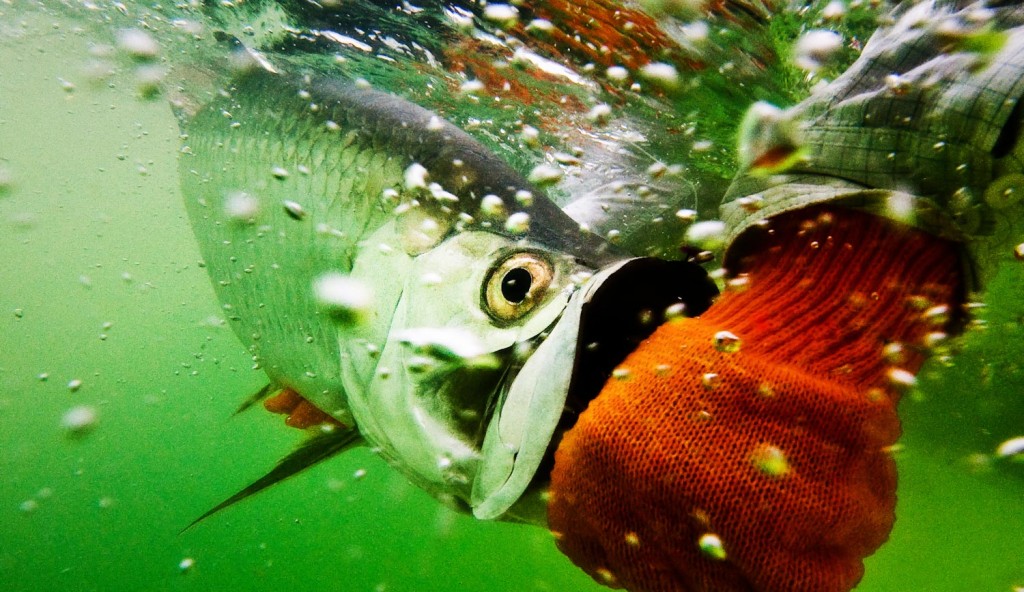
All waterproof point and shoot cameras have a built-in flash, but is it your friend? Well, sometimes. I’m a big believer in fill flash and use it a lot myself but when the camera drops below the surface of the water it can be a liability. When pros use flash under water the they take the flash off to the side, well off the lens axis, and trigger it remotely. It’s a great technique and works well but it’s impossible to pull off with a point and shoot. Here’s the problem with having your flash on the camera. It’s remarkable how much stuff is in water that looks gin clear to the eye. If the water has any visible matter in it it’s going to look ten times worse to the camera. When you set off a flash that’s too close to the lens you light up all of that stuff in the water. Because the trash between you and the subject is closer to the flash than your subject, it’s much brighter. The result is that you see your subject through a cloud of bright white trash. Underwater photography is cool and best of all it’s easier on the fish. Have fun with it, but start by turning off that flash. I think you’ll like the results. Louis Cahill Gink & Gasoline www.ginkandgasoline.com hookups@ginkandgasoline.com Sign Up For Our Weekly Newsletter!
Read More »Saturday Shoutout / Tenkara Cast
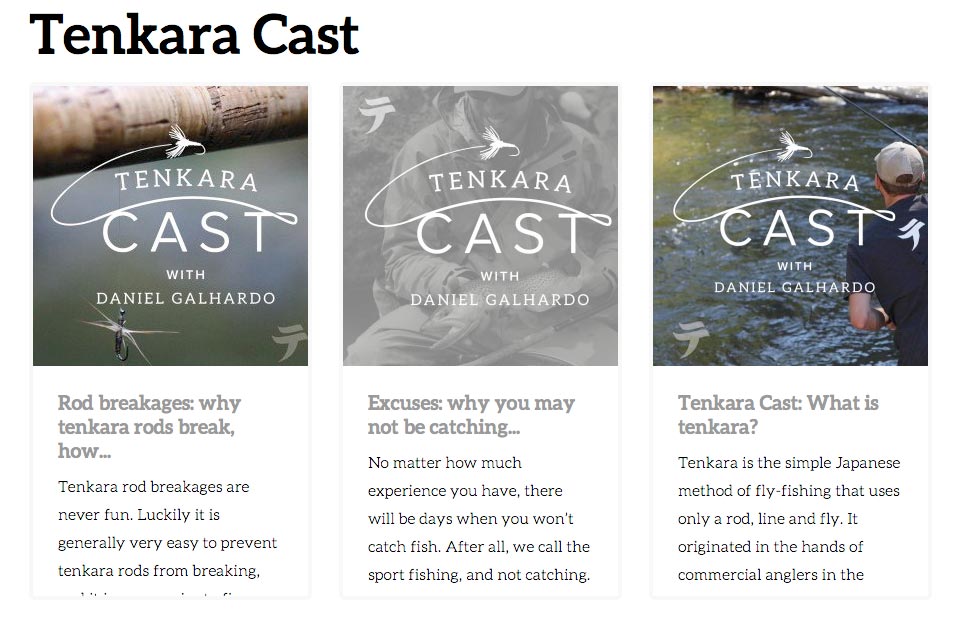
If you are into, or even interested in Tenkara, I’ve got great news.
Daniel Galhardo, G&G contributor and founder of Tenkara USA, has launched a new series of podcast that are chocked full of info and discussion on Tenkara fly fishing. The Tenkara Cast is as entertaining as it is informative. I find that when I let it run in the background, I mysteriously get a lot less work done.
IF YOUR A TENKARA MASTER OR JUST TENKARA CURIOUS YOU’LL ENJOY
THE TENKARA CAST.
Read More »Practice Your Fly Casting With A Plan
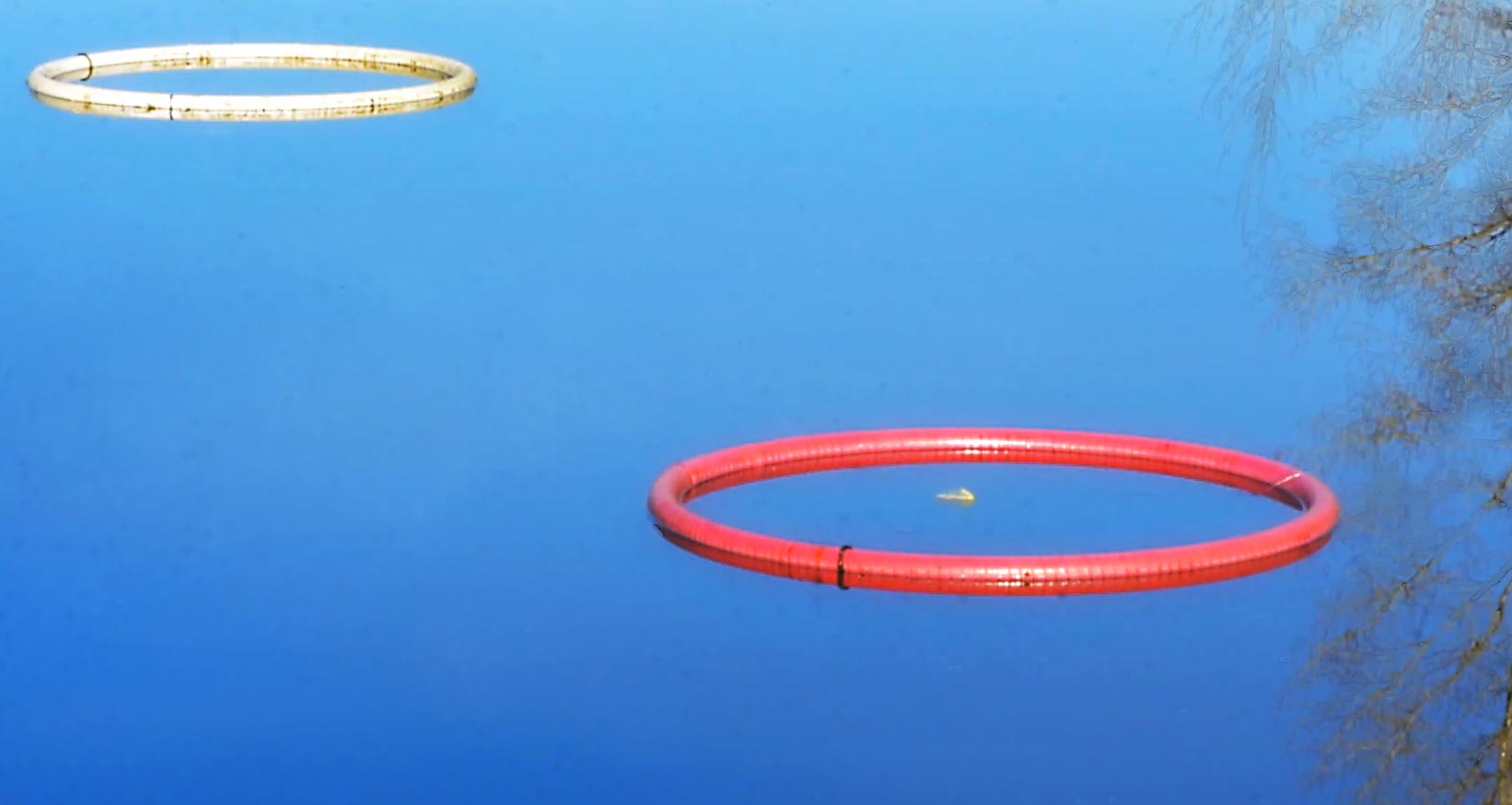
I believe that most fly anglers don’t practice their casting because they don’t really know how.
Most anglers count on fishing time to improve their casting. Fishing and practicing are two very different things and if you are working on your cast while fishing, you’re not doing either one very well. Practicing, without a plan, isn’t that productive either. Simply going out on the lawn and hucking as much line as possible isn’t an effective way to practice. In fact, it can reinforce bad habits.
Of course, if you’re really struggling, the best thing to do is work with a casting instructor. That’s a commitment, so we thought we’d lower the bar and bring the casting instructor to you. I spent an afternoon with champion caster, Tim Rajeff on his casting pond and he shared a simple practice plan that will build skills and reinforce good habits.
WATCH THIS VIDEO AND LEARN TO PRACTICE YOUR FLY CASTING LIKE A PRO.
Read More »Six Cutties in a Hot Tub
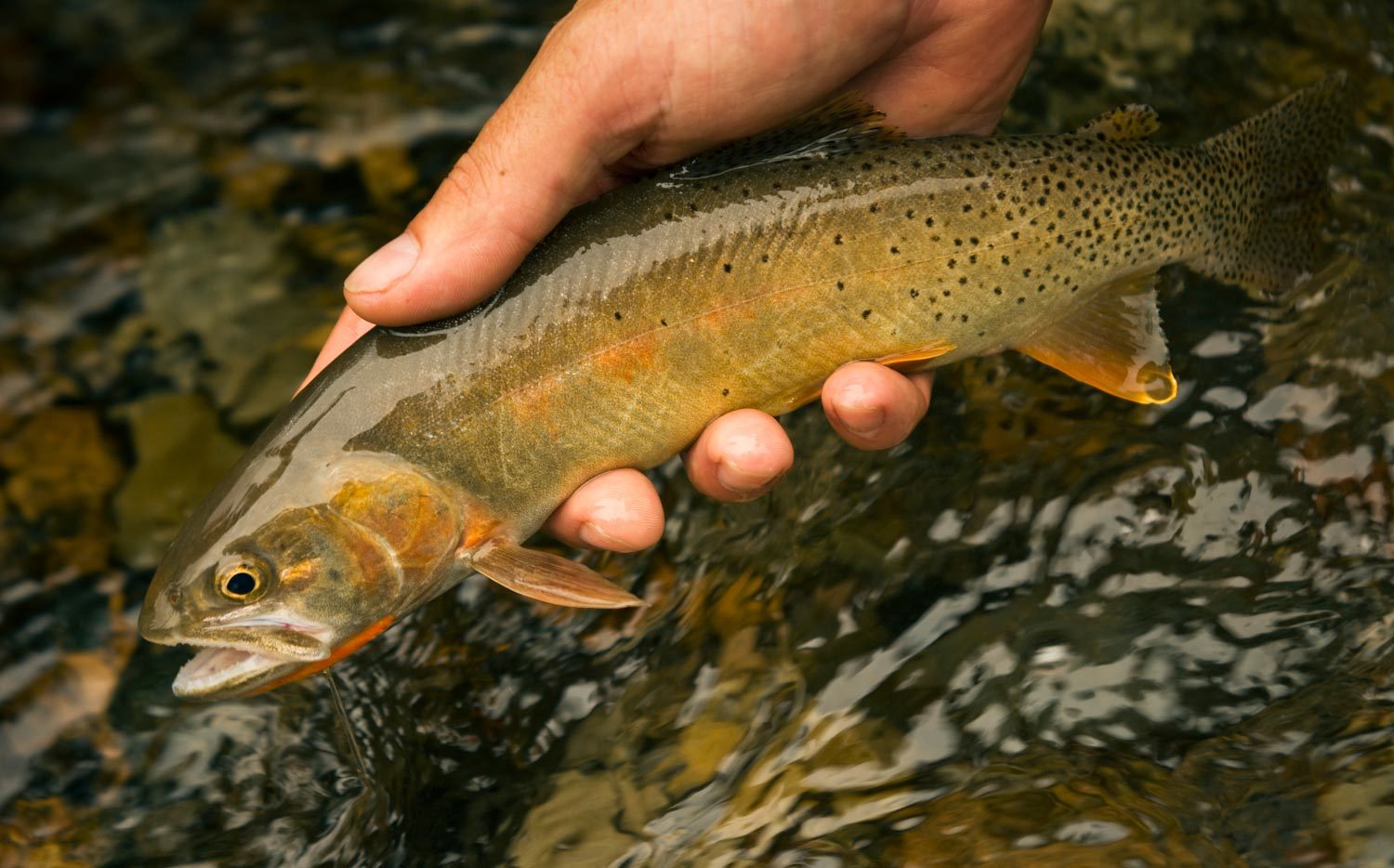
Are you fixing to head out west for an exciting trout fishing trip? If yes, and you plan to do some wade fishing, pay close attention to water levels before you decide on where to start your days fishing. Recently, Louis and I visited the Grey’s River in Wyoming for the opportunity to enjoy catching beautiful Snake River cutthroats on dries. Water levels were very high on the Grey’s and the lower sections of the river were too high to wade safely or fish effectively. We found out very quickly if we were going to get into some good fishing we’d have to focus our efforts on the upper sections of the watershed. That meant targeting the water above most of the tributaries dumping into the Grey’s, and driving 25 miles further up the forest service access road.
Read More »Dean River Steelhead in Crisis
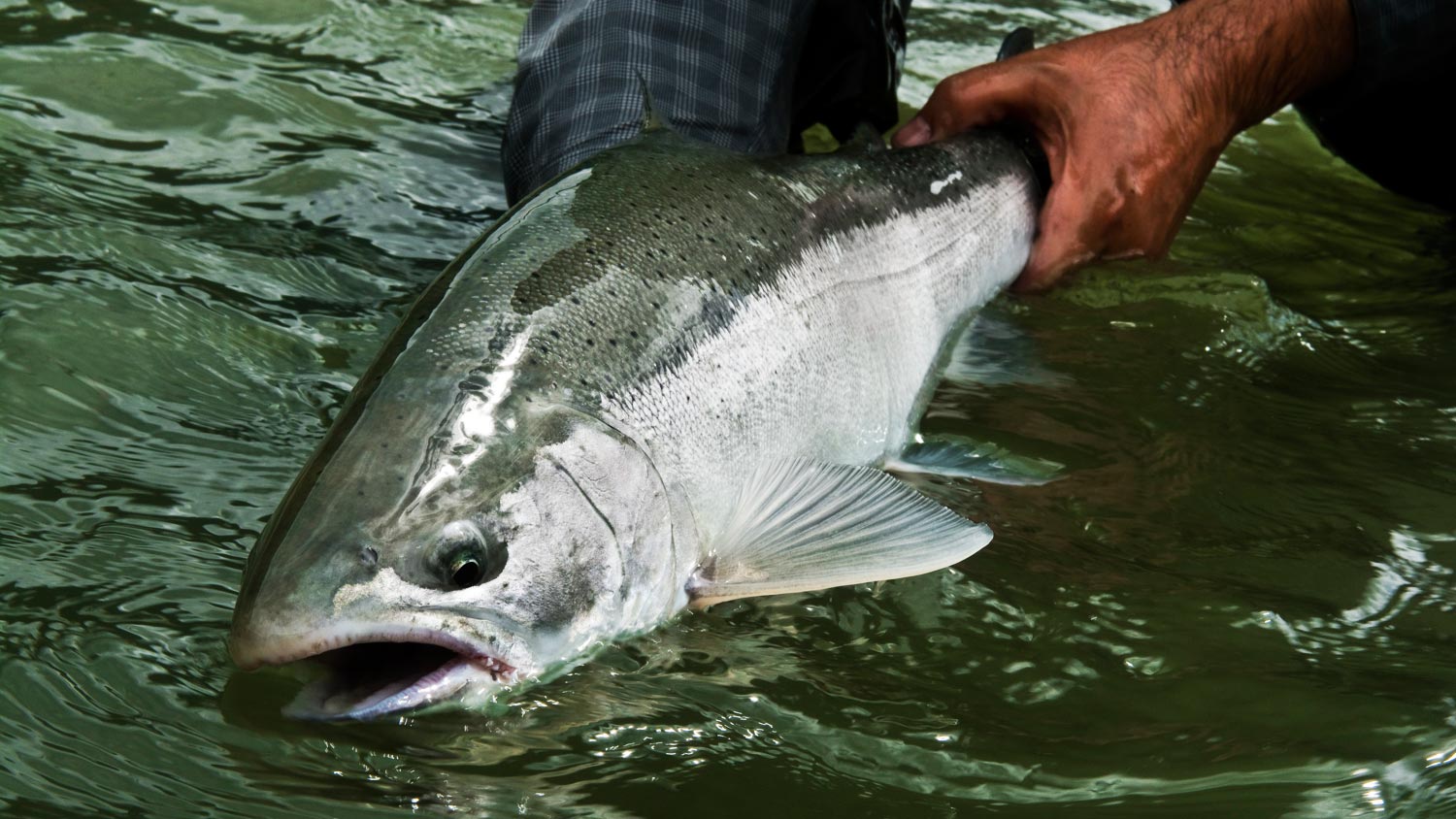
By Steve Morrow
Seasons on the Dean come and go. From the rains of June to the dry days of July to the low flows of August. Winter rolls over the valley like a heavy blanket and the people disappear. The years come and go and conditions ebb and flow like currents in the river. Some years a few lucky fish squirt over the tidal flats into the Dean and other years, endless schools of nickel muscle swarm in.
BUT THERE IS ONE CONSTANT. EVERY YEAR, WITHOUT EXCEPTION, THE NETS DESCEND ON AREA 8.
Area 8 is a government management area that includes some of the most productive waters of British Columbia’s central coast. It’s home to famed rivers like the Kimsquit, Bella Coola, Kwatna and of course the Dean. It’s part of the famed Great Bear Rainforest and the geographic heart of Canada’s pacific salmon belt.
The commercial fisherman that inhabit these regions eagerly await the runs of chinook and chum each summer. Commercial fishing is a way of life here and the backbone of many coastal communities. Few here argue its importance to the locals.
But the Area 8 fishery is a textbook example of mismanagement. A human enhanced run, the inflated schools of salmon provide increased economic opportunity and seem on the surface, hard to argue with. But more fish attract more attention and those wild stocks, the ones mother nature intended here, are subject to longer seasons with pressure that otherwise wouldn’t exist. One day openings quickly become two days and potentially three, and few boats become many, followed by many more.
Then in a perfect storm
Read More »Eternal Return
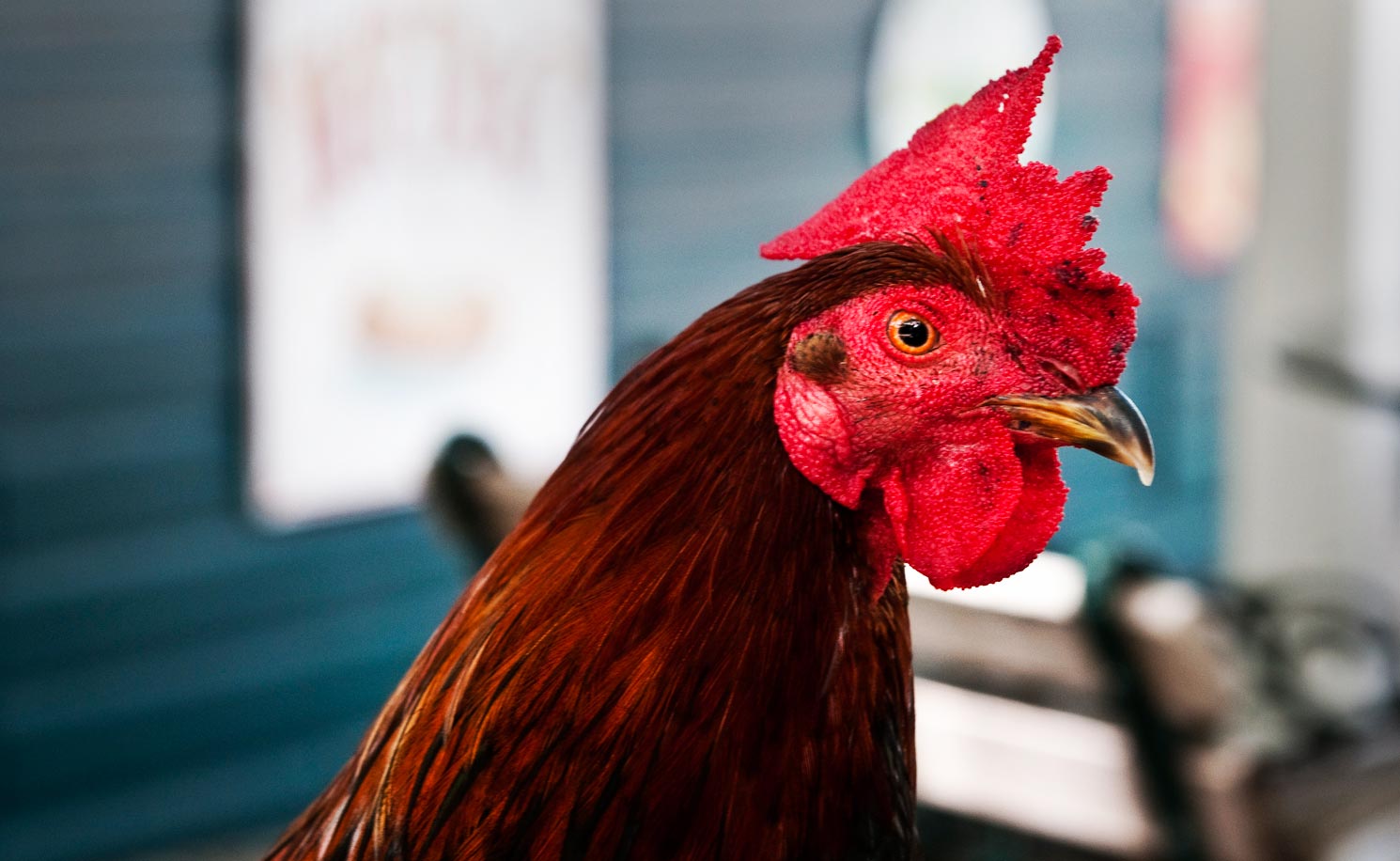
By Lauren Holt
“IN HINDSIGHT, CHANGE WAS CERTAINLY ON OFFER THAT SANTERIA SUNDAY MORNING”
“There is no being apart from becoming.” – Hegel
maahnk maahnk maahnk maahnk maahnk maank
I rolled over to find my phone and kill my alarm, groggy in the stillness and the purple dark of 5:00 am on a Sunday morning. It’s early for me – very early – but the sun would be up soon, and if I moved quickly, I could be on and off the Hooch in time for church. My phone said I could count on good water levels, so I loaded up and headed south. A fifteen-minute drive landed me in the nearly empty parking lot. It was a welcome though unsurprising sight. Rod rigged up and gear stowed, I portaged down to the water. As I walked, another noise emerged over the crunch of my boots and my boat on the gravel and debris left over from the most recent late summer storm.
bluck-bluck-bluck-bluck-bluck-bluck-bluck-bluckaaah bluck-bluck-bluck-bluckah
It’s funny how a sound can transport you. This one sounded like home, back in Northwest Arkansas, where we always had a few laying hens and a rooster or two milling around the farm. As I reached the water, though, a new sound met my ears – one that abruptly pulled me out of my reverie. Voices chanting. I couldn’t tell what they were saying, but the rooster certainly got the gist of their message, and he, for one, was not thrilled.
I launched my boat that morning to a chorus of frenetic chanting and a frantic rooster.
Then nothing. A quiet as startling as the ruckus it replaced. Maybe it should’ve given me pause, but it didn’t.
I made my way out into the water, a scattering of bright yellow flower petals the only concrete indication that I hadn’t dreamt the whole thing. This place – just wow. Pretty thoroughly lost in thought, I fished a bit, landed a couple of stripers, cleaned up, and walked up the church steps as the congregation rounded on the last verse of our doxology, “Awake My Soul, and with the Sun.”
If you’d told me back in Arkansas that I would witness a rooster and flower sacrifice on the Hooch, my years-ago self would’ve probably asked for the numbers of both the local police department and PETA chapter. But just like places change, they can change their people too, if we’re open to the experiences they offer us.
Though I haven’t moved nearly as much as many of the professionals who live and work in the Atlanta area, I have experienced my fair share of packing up and making a home for myself in a new place. From Northwest Arkansas – where my great-great-grandparents homesteaded and where, save my grandparents’ stint away from home for a little over a decade, no one but me has left – I moved first to college in central Arkansas, then to eastern Tennessee for my MA, then to Atlanta for my PhD and now my career. Every time I moved, I asked myself some version of the same set of questions: Where will I live? Where will I work? Where’s my river? Part of making a new home, for me, was finding new home water, and those questions gradually became my moving litany. I left the Kings River and my family for the Little Red, a completely different fish habitat and only about an hour from my undergrad alma mater. In Knoxville, I had the Clinch and the Smoky Mountains to explore close to home and the South Holston if I wanted to drive a bit. The move to Atlanta, though, gave me pause.
The appeal of each of the rivers I had left was clear and straightforward. The Kings River meant home. The Little Red meant my first fish on a fly rod and big (as in world record) brown trout. The Smokies meant gorgeous hikes and eager native brookies. My options in Atlanta seemed to be DH trout fishing on the Chattahoochee, a place I’d only experienced in my imagination when Mrs. Brown would turn on Alan Jackson’s latest greatest hits during “rest and re-center” time, or long drives to far flung water. Neither option thrilled me. But Emory is in Atlanta, so that’s where I moved, in spite of the fact that when I thought about the river that would be practically in my backyard, the first things that came to mind were hot, muddy water and beer. Basically Mudcats, NatGeo-style. You can laugh at my naïveté. It’s okay.
In reality, the Hooch boasts a little over 430 miles of biological and geological diversity, resulting in numerous unique and complex fish habitats.
From its headwaters in
Sunday Classic / Wind in Saltwater is Your Friend Not Your Enemy
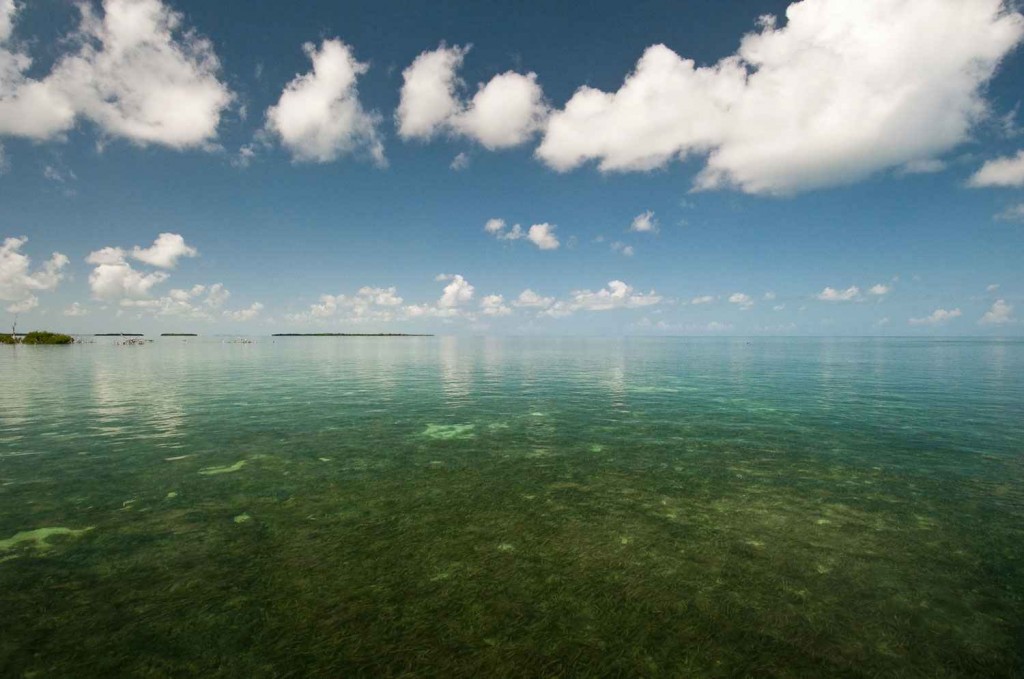
Its 6:30am in the morning when we arrive at the boat launch in Big Pine Key, FL.
Within minutes of stepping out of the car the stagnant humid air begins to suffocate my body. The North Georgia mountain weather that I’ve grown so accustomed to, feels like air conditioning compared to this, and my body is still in shock from the drastic climate change. As I walk down to the boat ramp to help unload the boat, I feel the first drops of sweat rolling down my back. I think to myself, are you freaking kidding me? The sun isn’t even up yet. There’s absolutely zero breeze this morning, so calm you could spot a fish rolling on the surface three hundred yards away. My eyes seem confused at what their witnessing. If you had blindfolded me, and taken me here, there’s a good chance I’d guess I was on a freshwater reservoir. Call me crazy, but I was under the impression there’s always supposed to be at least some wind in the saltwater. I’d know better, but I’ve spent very little time in the Florida Keys during the late summer. Apparently, it’s quite common to go days without any wind during the months of July, August, and September. Awww, it makes total sense why I saw all those sailboats anchored up now.
You always overhear fly fishermen complaining about too much wind on the saltwater flats, but you rarely hear fly fisherman begging for it. To much or too little of either can spoil your fly fishing on the saltwater flats, making fishing conditions extremely tough. Believe it or not,
Read More »Saturday Shoutout / Hook Shots and Pickles

These boys are not right.
Our buddy Joe Cermele is back in action with another episode of Hook Shots. This time, with the help of Joe Demalderis and (ringer) Tim Romano, he’s taking on the world of competitive fishing. The Dream Team travels to Lake Champlain To fish The Ditch Pickle Classic.
This is high-stakes competitive fishing as it should be, with manhood on the line. There’s pizza, there’s beer, there’s fish of laughable proportions. Do you know the difference between a pickle and a banana? You don’t want to miss it, when the boys from Field and Stream pull out the Pickle Stick!
CHECK OUT HOOK SHOTS AT THE DITCH PICKLE
Read More »Is That Fly a Nymph? A Look At Insect Life Cycles
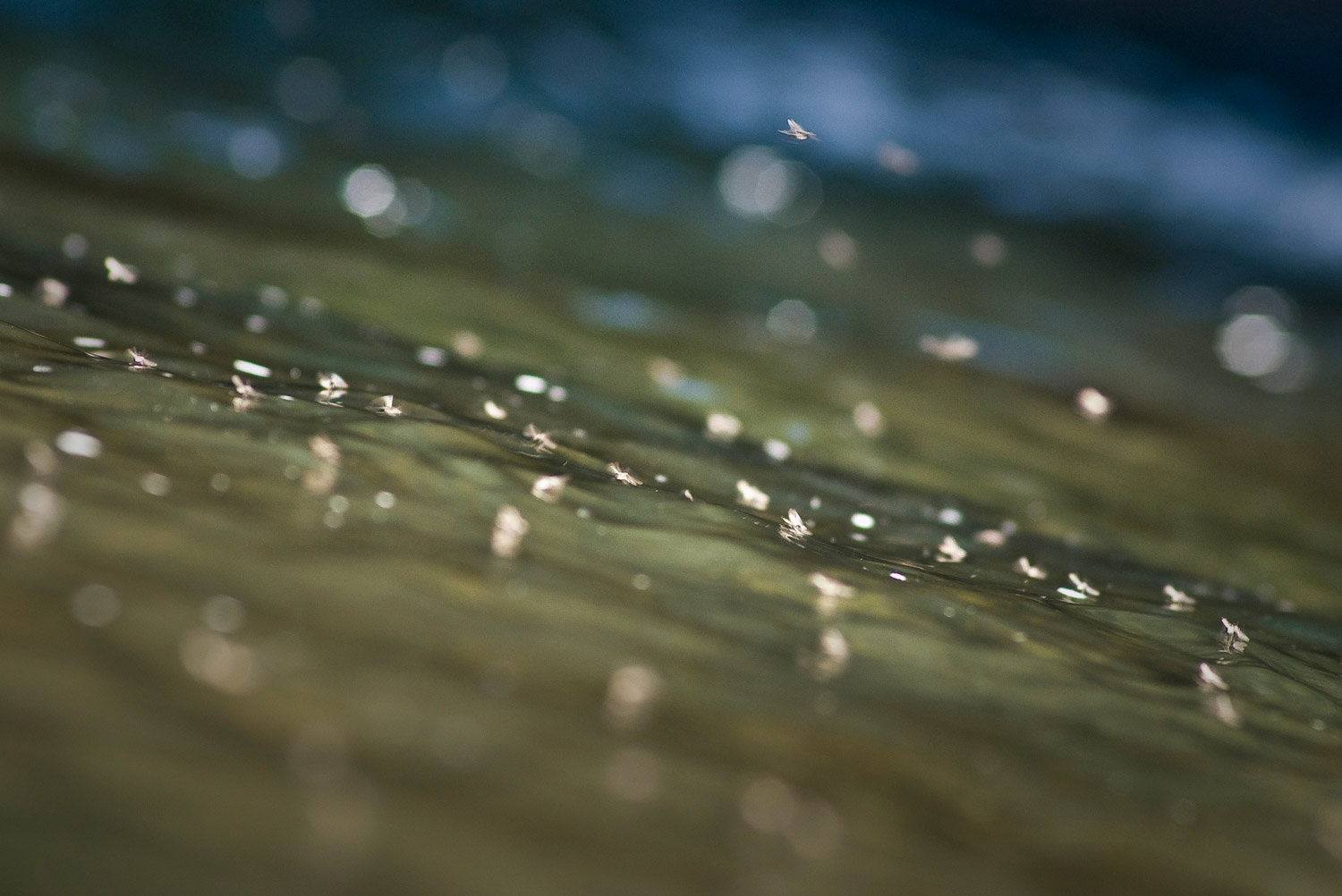
I’m not generally one to engage in exercises of semantics but I believe there is more at stake here than clarity of the word. I know that when I first became aware of midge patterns many years ago, I was reluctant to fish them because
Read More »3 Ways to Make Your Wiggle Minnow Fish Better
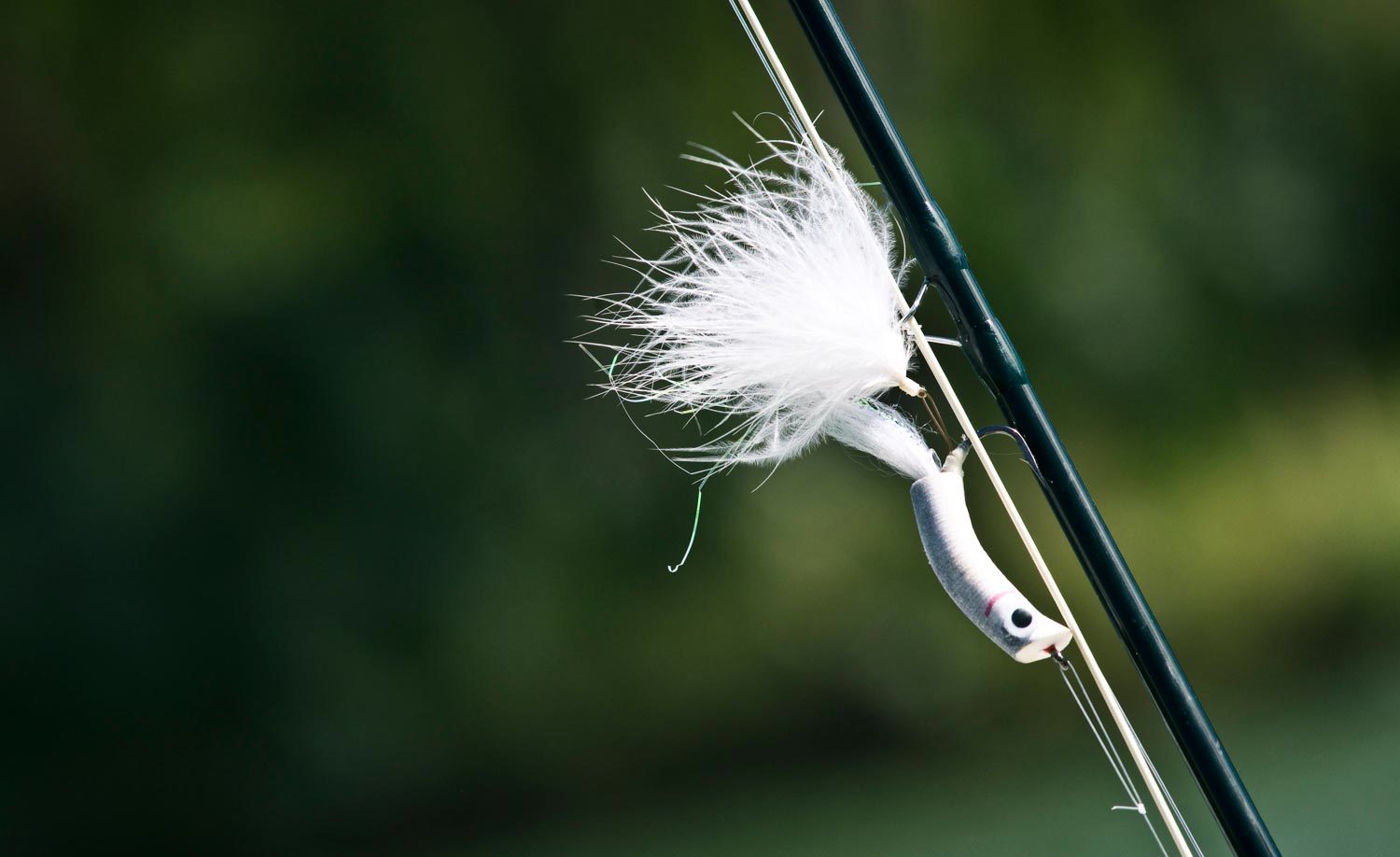
The foam wiggle minnow has been a mainstay streamer for me for trout and other predatory game fish for several years now. When you combine its realistic swimming action and the significant water it pushes during the retrieve, its one of the best streamers I know of for calling in fish from great distances to eat. Plain and simple, the wiggle minnow will catch fish just about anywhere you visit in both fresh or salt, regardless of the water conditions you may find yourself fly fishing. Furthermore, it also fishes well on all types of fly lines (floating, intermediate, sinking) and on a wide range of rod weights. This can prove to be very valuable if you find yourself on the water with limited gear options. The last few years, I’ve been experimenting with modifications to my wiggle minnows in the effort to improve their fishability.
Read More »